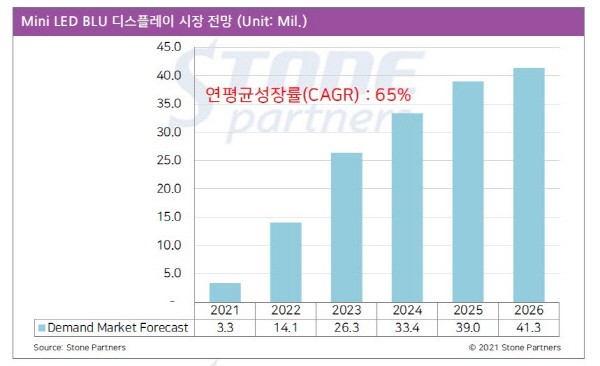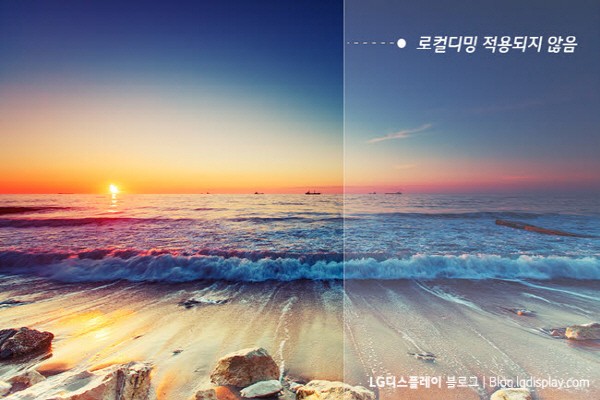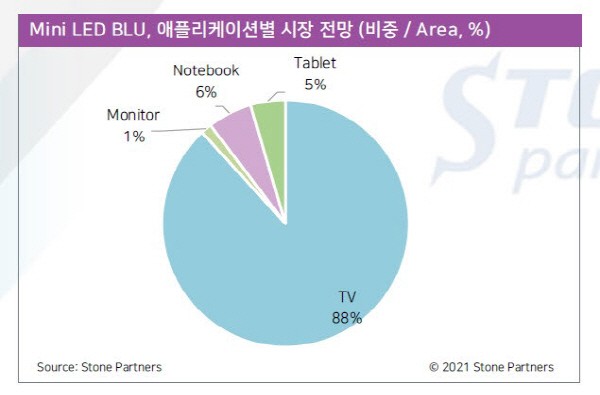It is projected that the liquid crystal display (LCD) market that uses mini-LED as a backlight (BLU) will grow more than 10 times in 5 years. Mini LED is expected to occupy one pillar of the premium display market.
Stone Partners, a market research company specializing in displays, said that the mini-LED BLU display will be on a full-fledged growth trajectory from this year. After forming a market size of 3.3 million units in 2021, the mini-LED BLU display market is expected to grow to 41.3 million units in 2026. Its average annual growth rate for the next five years is expected to reach 65%.
Stone Partners predicted that the mini-LED BLU technology will establish itself as an essential technology in the premium LCD market due to its excellent contrast ratio and color reproducibility.

Mini LED is a very small LED with a size of about 100 to 300 micrometers (㎛). Due to its very tiny size, it can arrange more LEDs densely than conventional LCDs. Tens of thousands of mini-LEDs are mounted on a single display.
The densely embedded mini-LEDs can maximize 'local dimming', which is a technology that makes bright areas brighter and dark areas darker. Stone Partners explained that "We can realize the contrast ratio of 1 million to 1 by dividing the local dimming zone into thousands of zones.
Mini LED is also expected to be intensively applied to high-performance premium TVs as it can reproduce high-purity colors through integration with quantum dot (QD) technology.

Stone Partners predicted that the mini-LED BLU will be expanded and applied mainly to TVs. It analyzed that as of 2026, TVs will account for about 88% of the products applying mini-LED and predicted that mini-LED BLU will be applied in the order of laptop, tablet, and monitor.

However, Stone Partners said that the recent high price of LCD panels and the rise in BLU manufacturing cost due to the application of thousands of LEDs could be a burden on manufacturers.
Ki-hyeon Kim, Director of Stone Partners, emphasized that, “In order for mini-LED displays to settle in the market, it is necessary to reduce cost by decreasing the unit price through the diversification of module supply chain and the improvement of structural design."
Staff Reporter Gun-il Yoon (benyun@etnews.com)